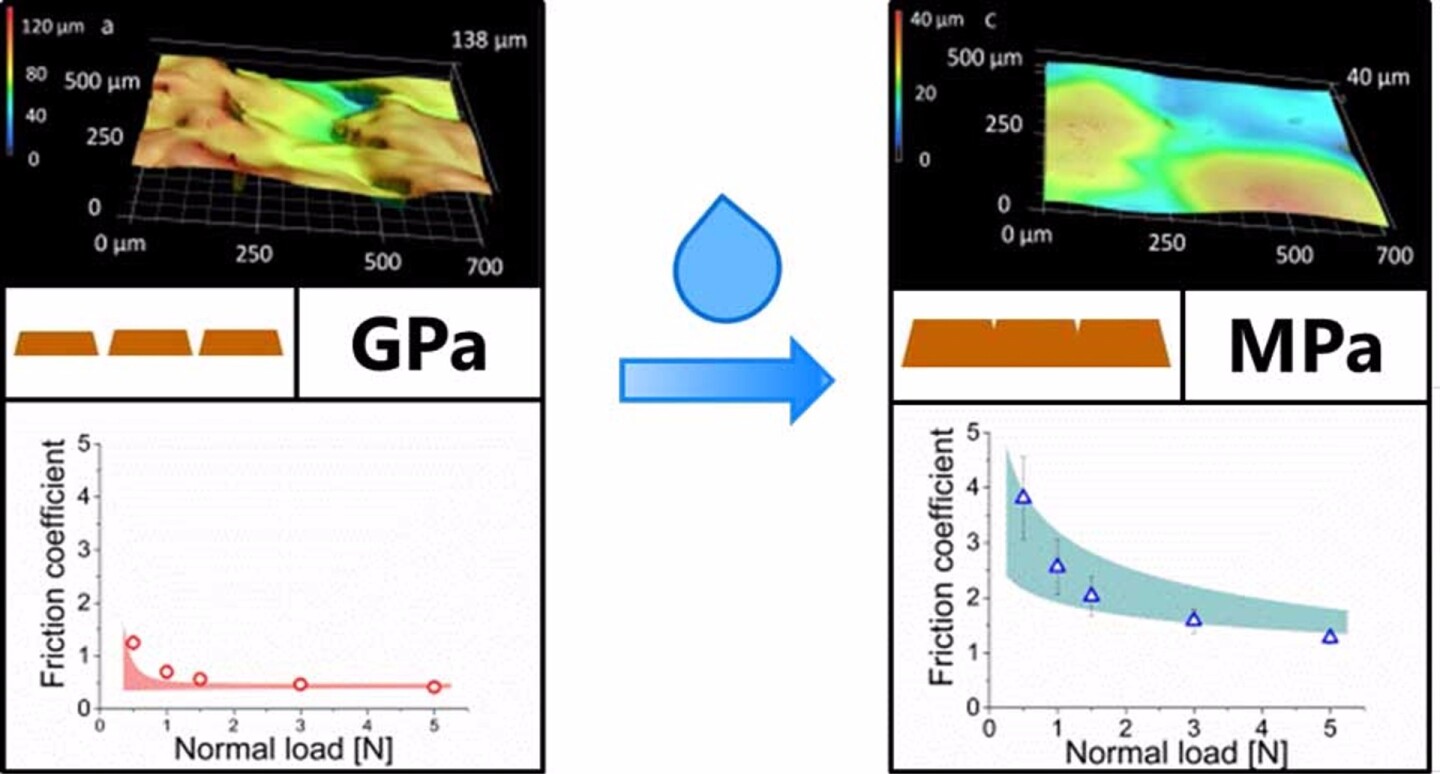Scientists at the Swiss Federal Laboratories for Materials Science and Technology (Empa) are developing a gelatine-based model that simulates the characteristics of human skin by mimicking the way it absorbs water. By controlling the moisture content in the gelatine, the team plans to use it as an alternative to human clinical trials for testing how skin interacts with textiles, like surgical dressings.
Skin is very useful stuff. Not only does it keep your insides on the inside, it's a dynamic material that alters its characteristics based on its immediate environment. One key factor is moisture, which skin absorbs to produce the "pruny" appearance that shows you were in the bath tub too long. Moisture also makes the skin softer and smoother, resulting in more friction. The right amount of moisture helps for holding onto tools and it's also the reason, when it's warm enough, bare feet provide a better grip on a ship's deck than boots.
However, too much moisture in the skin can produce too much friction, resulting in blisters, rashes, and even sores like when you've been walking too long in wet boots and socks.
Understanding how skin changes with changes in moisture and how it interacts with fabrics is very important for everything from designing proper military boots to creating bandages that protect a patient's wounds without harming the surrounding skin.

According to Empa, the conventional way of testing skin/textile interactions has been to ask volunteers to rub swatches of fabric on their skin and measure the results, but the researchers say that is time consuming, expensive, and risks injuring the subject. To complicate matters further, the way skin, textiles, and water interact is complex, so slight perspiration while walking is different from running in a rainstorm.
To produce something more controllable that reduces the need for human subjects, Empa researcher Agnieszka Dabrowska has come up with a model that exactly simulates human skin using gelatine with a textile substrate. Like normal skin, the gelatine version absorbs moisture and alters its properties in the same way, so it interacts realistically with fabrics and other materials.
The model was created by taking normal gelatine, which dissolves in water, embedding it in cotton fibers and treating it with chemicals that cause the protein polymers to form cross links that hold the molecules together and prevent them from dissolving. The result is a substance that absorbs water and swells, smooths, and softens in the same way that skin does.
Dabrowska initially considered using keratin as the basis for the new skin model, but gelatine is much cheaper – it costs only a few Swiss francs as opposed to thousands. Empa says that the new model is no substitute for all human testing, but it does reduce the need and allows scientists to eliminate many textiles at an early stage.
Dabrowska says the present model relies on an external water source, but her team is working on ways to eliminate this as well as introducing pores that will allow the artificial skin to sweat realistically.
Source: Empa






![The Ti EDC [everyday carry] Wrench is currently on Kickstarter](https://assets.newatlas.com/dims4/default/0ba225b/2147483647/strip/true/crop/4240x2827+0+3/resize/720x480!/quality/90/?url=http%3A%2F%2Fnewatlas-brightspot.s3.amazonaws.com%2F59%2Fb2%2F6a6fdd0348a8bfdad88bbcefec53%2Fdsc03572.jpeg)